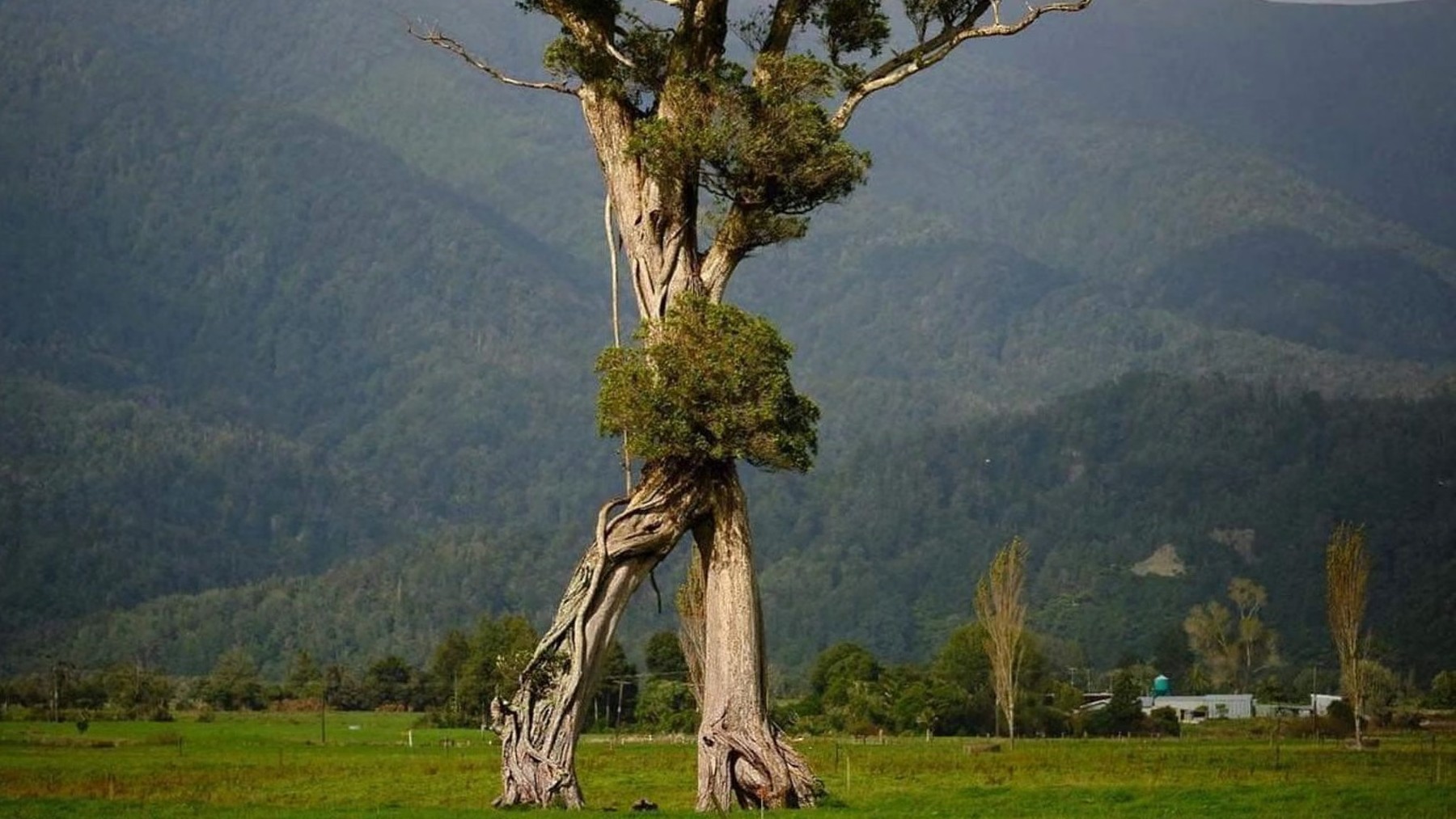One of the most characteristic tree species of New Zealand, and perhaps the world, is the northern rātā tree (Metrosideros robusta). Located near Karamea on the West Coast of the South Island, it has been nicknamed the “walking tree,” because it appears to be walking due to the arrangement of its roots. It has even been compared to an Ent, a race of fictional creatures present in the “The Lord of the Rings” saga. In 2024, it received the Tree of the Year award from the New Zealand Arboricultural Association (NZ Arb).
This endemic species of New Zealand used to be one of the most common species in the forests. However, their presence has been declining over the years, to the point of being classified as a vulnerable species by the New Zealand Plant Conservation Network. They have not only been threatened by deforestation, but also by animals like the possum, which feeds on their roots, as well as by hybridization with pōhutukawa (Metrosideros excelsa), and by the action of myrtle rust (Austropuccinia psidii).
Northern rātā tree, the “walking tree”
If you are a fan of ‘The Lord of the Rings’, you will know what I mean if I refer to the Ents. In the famous fantasy saga, the Ents are a race of creatures very similar to trees, whose mission is to protect the forests of Middle-earth. Well, the northern rātā tree, known as the ‘walking tree’, has a considerable resemblance.
With long branches and roots that resemble arms, it seems to be walking through the forest. It is a tree found only in a large paddock next to a cemetery, on the west coast of the South Island, near Karamea. According to The New Zealand Tree Register, it is almost the same height as a seven-story building, about 105 feet (32 meters).
Tree of the Year
Last year 2024, another edition of the Tree of the Year awards was held, organized by the New Zealand Arboreal Association (NZ Arb). It garnered 42% of the votes from the public emailed to Live Science, sweeping the other 5 finalists. According to BVrad Cadwallader, the organizer of the contest, “It just took the lead from the start.” Richie Hill, President of NZ Arb said: “The travelling tree is an ‘outstanding feature’ and an ‘excellent example of the remarkable trees that we, as New Zealanders, are fortunate to experience”.
What makes it so special?
The exact age of the specimen is unknown, but the organizers claim that it is the only one that remained standing after the logging of the forest 150 years ago. It is an epiphytic species, meaning that its growth begins in the air until it eventually reaches the ground. According to Cadwallader, “That host tree is no longer there. Maybe the tree was very, very large, or there may have been another tree that fell and leaned against the host tree, and that is why the roots have split near the ground, giving it that walking appearance”.
What is threatening the Northern rātā trees?
Like almost everything special, rare, or different that nature gives us, the northern rātā trees have faced multiple threats over the years, which has led to a decline in their numbers. They have even been considered a vulnerable species by the New Zealand Plant Conservation Network. They not only struggle for survival against deforestation, but there are also invasive fauna species that threaten them. One example is the invasive opossums (Trichosurus vulpecula), which not only gnaw at their roots but also eat their leaves.
Hybridization with pōhutukawa (Metrosideros excelsa) also poses a threat. Moreover, they have also been affected by a pathogenic fungus first detected in the region in 2017, originating from South America, the myrtle rust (Austropuccinia psidii). That is why it is important to respect the ecosystem cycles of each region and not to introduce invasive species that may eliminate local species.





